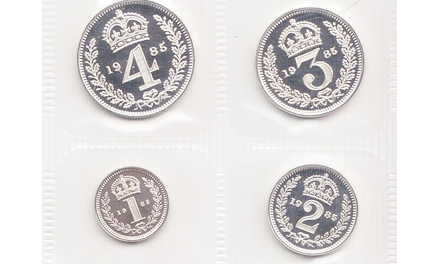
Maundy Thursday
Maundy Thursday is the day before Good Friday. On this day Jesus reputedly washed his disciples’ feet at the Last Supper, symbolising humility and service to others. From the time of St. Augustine‘s mission to Britain (597-604), priests are thought to have performed a similar act for their congregations as part of their Easter services. At some point this duty also accrued to the monarch, possibly from King John (1167-1216) onwards.
A group of poor peasants would be brought before the king to receive their foot wash, some items of food or clothing and perhaps a coin. In the 16th and 17th centuries the ‘royal touch’ was actually thought to have healing properties, but, nevertheless, by the mid-1600s, this somewhat personal Maundy task had been delegated to a bishop.
Nowadays, the Royal Mint issues special, highly collectible, silver Maundy coins each year. Assuming the monarch is Y years old, 2Y sets of these coins are placed into 2Y white purses. 2Y sets of other, commemorative coins are placed into 2Y red purses. One purse of each colour is given by the monarch to Y men and Y women, who are no longer ‘poor’ but ‘deserving’, having been selected by their local churches.
(Image of set of Maundy coins for 1985: Wehwalt at Wikimedia Commons / CC BY-SA 3.0)
